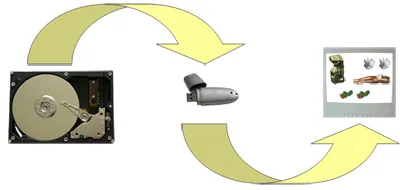Background
Over the last years we have pursued research on compression techniques for large data sets such as gigantic unstructured point scans, particle simulation data, high-resolution volumetric data sets and time-varying sequences. Our goal is to enable interactive rendering of even the largest data sets on commodity desktop PCs. In particular, we focus on techniques amenable to high-resolution displays, where the sheer amount of graphical primitives to be rendered is already far to high as to be kept in local memory of recent GPUs or to be uploaded progressively.
One alternative to address this problem is to develop compression schemes that enabe random access to the data. In this way, rendering can be out of a compressed data representation, significantly reducing bandwidth requirements at the same time accomondating the use of such techniques in out-of-core scenarios. To exploit bandwidth and numerical capacities on recent GPUs most efficiently, non-standard compression schemes have to be investigated or standard schemes have to be restructured accordingly.
Recently we have made considerable progress in the field of compression domain rendering: Firstly, we have developed a compact linked-voxel representation which enables efficient GPU raycasting of voxelized high-resolution surfaces or isosurfaces in volume data. Secondly, we have developed a wavelet-based compression scheme, including coefficient quantization, runlength and Hufman encoding, which runs entirely on the GPU. We have demonstrated high compression rates and performance in the context of digital terrain models and 3D turbulence fields.



